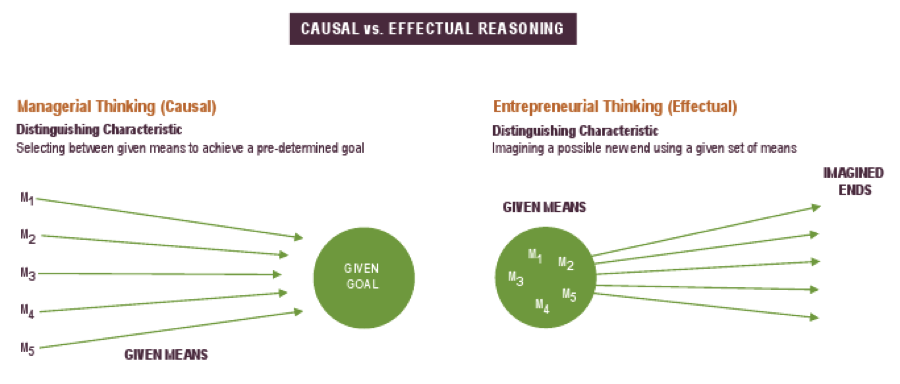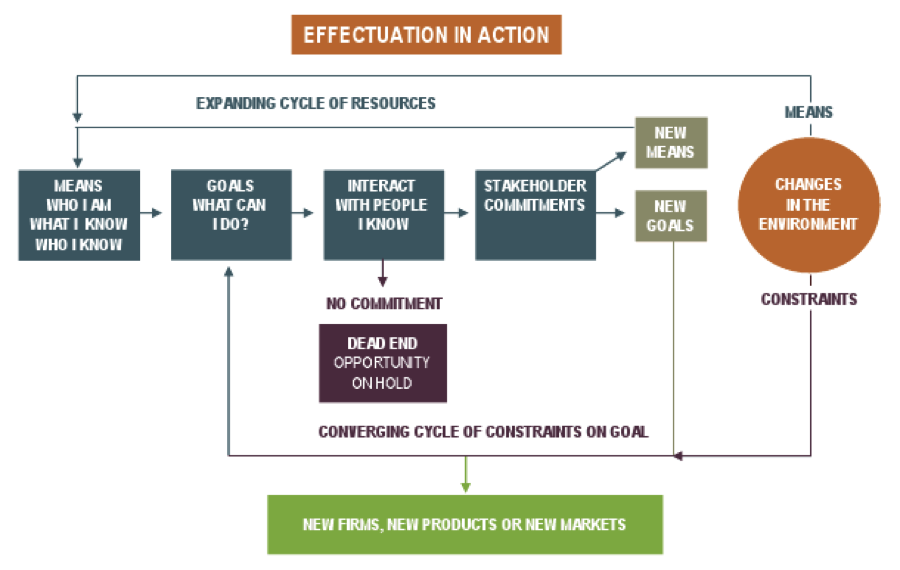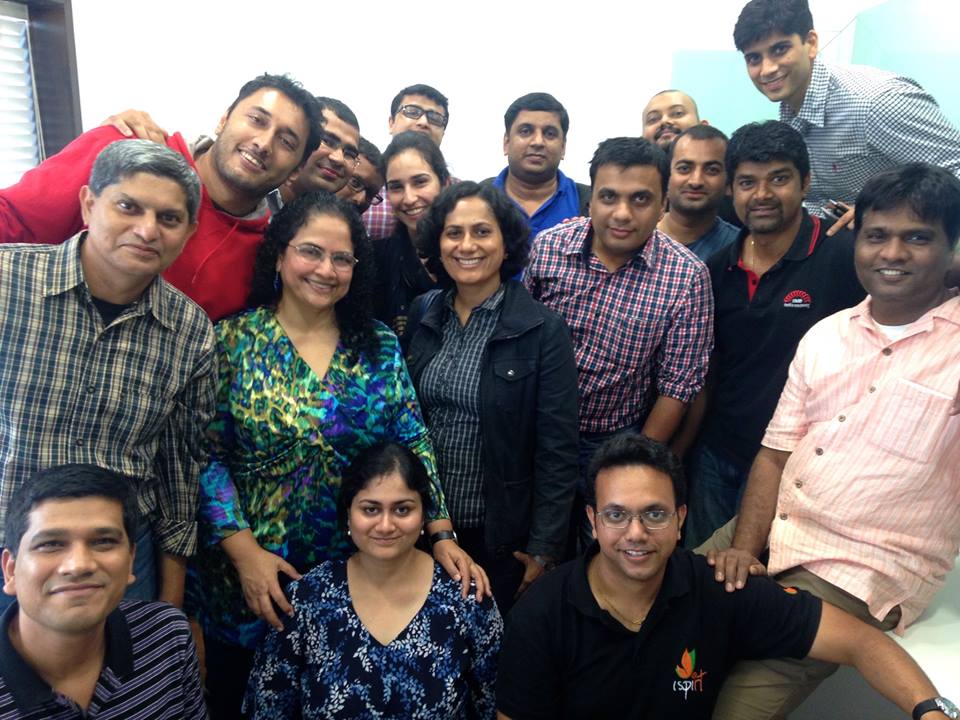“The Why” :
This blog is a very hard one to write and is almost equivalent to capturing what Po felt at the end of KungFu Panda (for uninitiated don’t worry next few paragraphs will make it clear). Therefore I am not going to attempt to explain the methodology in its entirety. There is lot of information online on Wikipedia and Effectuation. However I am going to provide crux of the learning (memorable one liners wherever possible) that I took away and urge readers to explore more. The questions from current entrepreneurs at the end also should help one to think of it in an applied context.
The concept is extremely powerful and yet very simple; but to truly get the gist one needs to have attempted at least one startup. In spite of this I recommend or even mandate reading this before anyone attempts Entrepreneurship. If you don’t believe me, see Mr Vinod Khosla’s handwritten notes and remarks of this paper written by Prof Saras (first good paper I have seen titled – What makes entrepreneurs entrepreneurial?
Prof Saras arrived at this insight after interviewing 45 successful entrepreneurial CEOs from varied backgrounds and industries. Success in this context is defined as Entrepreneurs who have been doing companies for over 15 years with multiple startups and at least one IPO. The interviews and the analyses focused on the decision making process and the personal convictions of the entrepreneurs apart from the business models and the numbers.
The “What”:
One of the strongest common traits that emerged out of this is the lack of belief in market predictions and trends. Instead these focused on what is tangibly available to them at that point in time. Basically work with whatever already is in your control and not predict the future. This obviously generated a lot of heated discussion amongst the early stage entrepreneurs present, as the first step of any business plan is market projection. It’s a very difficult concept to wrap the head around as most of us come from managerial background and have been conditioned to project a goal.
The second strongest common trait is “Co-Creation of future”. This is a phenomenal concept much different than prevalent thinking of co-founder, investor, and customer equations.
The method is called “Effectuation” (as opposed to causal) is ruled by few first principles explained below. (For folks clued into this whole thing there are some overlap/comparison with Lean movement as well as Theory of constraints. )

Bird in Hand:
Do not start with the result. An actual sale is the only form of market prediction that one should rely on.
Affordable Loss principles:
Invest only as much as one can afford to loose. In extreme ideal case it is zero. The affordability is not just about material aspects.
Crazy Quilt principle
Build a network of self-selected stakeholders. No competitive analyses.
Lemonade principle
Embrace and Leverage surprises (Not avoid them)
Pilot in the Plane
So if you can’t predict how do you operate? This viewpoint is, future is neither known nor predicted, it is made.
The two by two matrix below gives a categorization various perspectives on thinking about the future. Corporates and VC tend to go for first quadrant. While the most successful entrepreneurs operate in quadrant 3.
The “How”
In action the effectuation process looks like this. The great emphasis is on really knowing who one is and defining the affordable loss (Box 2) from left. From then on it is really finding the co-creators and moving ahead.

The session concluded with many real life situations of the entrepreneurs present who shared their problems and an effectual way of solving them. Some of them with crux of the advise by Prof Saras are described in brief here.
 1) If one is not focusing on market research, how do you know which market segments to go after? (Adarsh of Aindra)
1) If one is not focusing on market research, how do you know which market segments to go after? (Adarsh of Aindra)
- The first principles stress on doing what is in your control and getting a committed co-creator. So selection of the target segments should be dictated by these factors. (Bird in Hand) Affordable loss principle dictates how much are you willing to lose in search of markets and that will also play into decision on markets.
2) How do you decide when to expand on another geography? (Mukesh of MediaAnt)
- Base it again on the co-creation and bird in hand principles. Expand when it makes sense from the control perspective and when you have a committed co-creator.
3) What happens when effectuation ‘s first step (what we know, who we are) leads you to too small a niche? (Natwar, Around.io)
- Sometimes it is great way to cut the loss and attempt something else. However many successful entrepreneurs have found a general aspect that can be scaled into larger markets (Ex IceHotel niche realized that it can export iceglasses to major high end hotels, also curtain blinds company realizing it is in the business of light control and expanding into lamp shades.)
The crazy quilt and lemonade (Embrace the surprise) may lead the extended team and sometime co-founders to feel that founders are disoriented. How do you deal with such situations? (Avi, Levitum)
- People management no matter what way you go is a tough challenge. It is good to take the next level into the mindset and make sure their affordable losse’s are aligned with the change in direction.
Effectiveness of such methods in Indian eco system where trust factor is low and getting committed co-creator is not easy. (Manjula of IronSense, Vikram of BookBuzzer)
- While there may be some truth in this as traditionally Indian businesses are family/community owned, the situation is not very different in developed countries. Commitments are hard and going back on the word does happen sometimes.
What does it mean when a stakeholder is following up but not giving money? Also specific question by Zimply about how make publisher commit to the discussed pricing ? (Roxna of Zimply, Anjan of Inquirly).
- Both of these require ability to peel the layers and get to the root cause of stakeholders (co-creators) commitment phobia. Finally it is better to move on and find a new co-creator to make sure you are within your affordable loss.
To conclude, I feel at the center of it all is a very crucial “people and communication skills” that would help people to find co-creators. Hopefully we can collectively build the techniques tools and use cases needed for these amongst our eco system.

